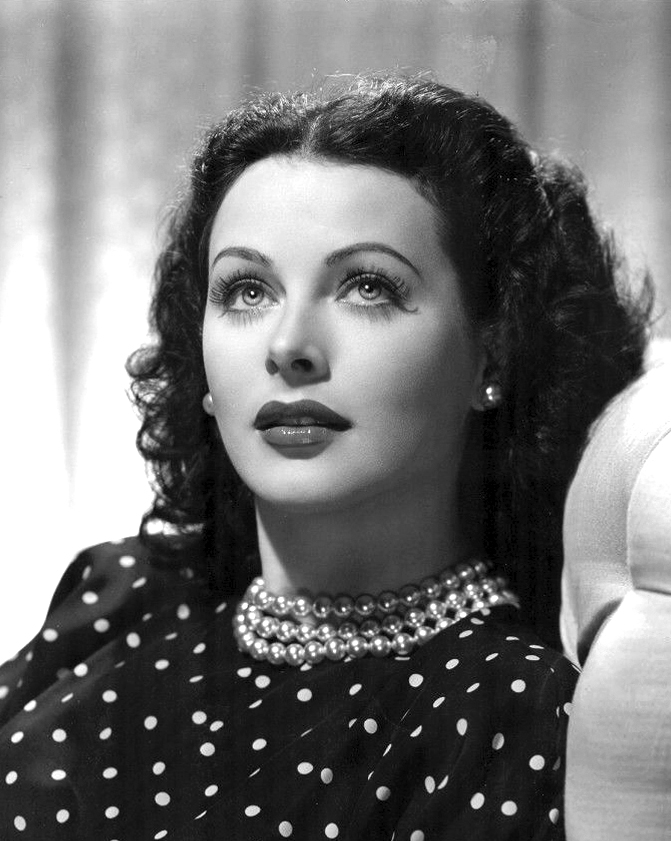Heroes of Technology: Hedy Lamarr
by Scott Dutfield · 12/04/2019

The leading lady who paved the way for Wi-Fi technology
On the big screen, Hollywood siren Hedy Lamarr captivated audiences with her stunning beauty and acting talent, but when the cameras weren’t rolling she could be found developing a technology that would go on to change the world.
Born in 1914 in Vienna, Austria-Hungary, young Hedwig Kiesler (her original name) dropped out of school to pursue acting, first in Czechoslovakia and then Hollywood, where she changed her name to Hedy Lamarr. Despite not completing her education, she retained a passion for knowledge and loved to tinker with contraptions in her trailer. She came up with an idea for an improved traffic stoplight; a tablet that would dissolve in water to create a carbonated drink; and, while dating aviation tycoon Howard Hughes, she helped him develop a racing airplane to sell to the US Air Force.
However, by far her most successful creation was ‘frequency hopping’. When World War II broke out, the Jewish-born Lamarr felt uncomfortable living in luxury in Hollywood while her people suffered horrific persecution in Europe, so she decided to use her brain to help the war effort.
She had picked up a great deal of knowledge about weapons technology while married to her first husband, munitions manufacturer Fritz Mandl, and along with her friend and composer George Antheil she came up with a revolutionary idea that would prevent the Allies’ torpedoes from being intercepted by the enemy.
Although they were granted a patent for their ‘Secret Communications System’ in 1942, the US Navy turned them away. Lamarr then offered her weapons expertise to the National Inventors’ Council but was told that she should use her looks to help the war effort instead.
Lamarr’s brains were overshadowed by her beauty throughout her life. While she achieved worldwide fame as ‘the most beautiful woman in the world’ and as the star of such films as Algiers, I Take This Woman, Come Live with Me and Samson and Delilah, her contribution to science and technology went largely ignored.
In the 1950s the idea of frequency hopping was finally adopted by the military, but because her patent had expired Lamarr went uncompensated. Later, it became critical for the development of wireless communication, making the Bluetooth and Wi-Fi technology that many of us use every day possible, but still she received no credit.
It wasn’t until the final few years of her life that she was honoured with an award for her groundbreaking invention. Later, after her death at the age of 85, she was inducted into the National Inventors Hall of Fame.
Today, Hedy Lamarr is rightly remembered not only as a glamorous star of the silver screen, but also for her brilliant and revolutionary idea which now connects all of the small screens in our pockets
The Big Idea: Frequency hopping
During World War II, the Allies’ radio-controlled underwater missiles could be easily detected by German submarines because the signals were broadcast over a single frequency. To solve this problem Lamarr and piano composer George Antheil developed a system called ‘frequency hopping’, which could rapidly switch the signal to one of 88 different frequencies – the same number of keys on a piano – seemingly at random. Only those who knew the chosen combination of frequencies could intercept the signal, while everyone else just heard noise. This later formed the basis of the spread spectrum technology used to prevent interference in Bluetooth, Wi-Fi and GPS communication.
5 things to know about… Hedy Lamarr
In later life Lamarr gave her surgeons new ideas for cutting and folding her skin to better hide the scars. Her techniques became widely used in
the industry.
After being turned away by the National Inventors’ Council, Lamarr helped the war effort by becoming a spokeswoman for war bonds and managed to raise $7 million in one night.
Lamarr’s beauty eventually proved to be a curse, the actress growing bored of being cast in movies just for her good looks, saying, “Any girl can be glamorous, all she has to do is stand still and look stupid.”
In 1997, Lamarr became the first woman in history to receive the coveted Invention Convention’s BULBIE Gnass Spirit of Achievement Award, known as the ‘Oscars of inventing’.
Towards the end of her life, Lamarr became intensely private, rarely venturing out of her home. Instead she spent up to seven hours a day talking to people on the phone.
This article was originally published in How It Works issue 114, written by Jo Stass
For more science and technology articles, pick up the latest copy of How It Works from all good retailers or from our website now. If you have a tablet or smartphone, you can also download the digital version onto your iOS or Android device. To make sure you never miss an issue of How It Works magazine, subscribe today!




